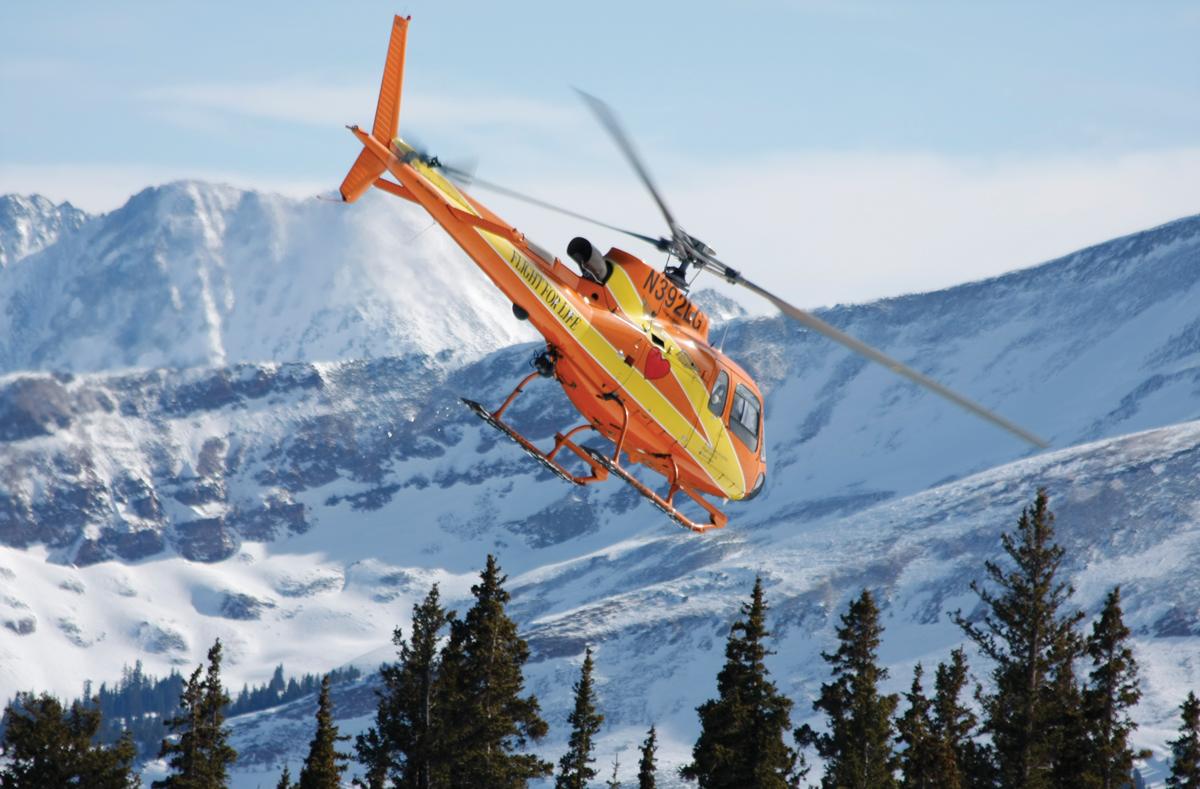The Local newsletter is your free, daily guide to life in Colorado. For locals, by locals.
Lyn Chambers jolted awake in pain. The 58-year-old’s head felt like it was exploding. Panicked, she stumbled her way to the lower level of her Breckenridge cabin—and then the convulsions began. Paramedics rushed her to the nearest hospital, in Frisco, where doctors discovered a bleeding mass in her brain. She needed immediate treatment or she’d risk falling into a permanent coma. Trouble was, the hospital in Frisco didn’t have the surgical capabilities to help her.
Chambers’ situation isn’t all that unusual. According to the University of Pennsylvania School of Medicine, one in four Americans lacks timely access to optimal care during emergency situations. Hence, the need for an organization like Flight for Life. Founded in 1972—after the devastating Wichita State University plane crash outside Loveland killed 31 people—as the country’s first hospital-based emergency air ambulance program, Flight for Life operates through St. Anthony Hospital to provide critical-care transport when people need lifesaving help—fast. The five helicopters and two fixed-wing planes serve Colorado, nine other states in the Rocky Mountain region, and can travel as far as Mexico or Canada. A Flight for Life helicopter can get medical staff from Denver to Aspen in 45 minutes.
Hikers tumbling down a rocky slope, a skier crashing into a tree, deadly car crashes—the Flight for Life team has experienced a wide range of emergencies among the nearly 4,000 critically ill patients it sees each year. “We are kind of a flying ICU,” says Nate Hinze, a flight nurse (each helicopter or plane is outfitted with a pilot—who typically has military training—a nurse, and a paramedic). The on-board staff has the training and wherewithal to perform procedures traditional nurses and medics aren’t permitted to, such as intubating and placing IVs and chest tubes—all in a 15-square-foot flying “office.” “You really have to adapt to your environment,” Hinze says. “Imagine what they did on ER. We do that stuff in the back of the aircraft.”
Ski-patroller-turned-flight-paramedic Jamie Kavanaugh says the job can be about more than medical ability. The Flight for Life staff has had to hike, climb, and otherwise fight its way to patients. On Kavanaugh’s first search-and-rescue mission to help two fallen hikers between Torreys Peak and Grays Peak, 40 miles west of Denver, he and another medic had to drag one patient up a scree slope on a rescue sled in less than 30 minutes, thanks to descending darkness that would make takeoff dangerous.
For Lyn Chambers, that training and fortitude saved her from a potentially devastating medical situation. Flight for Life medics, who arrived at the hospital’s landing pad in Frisco, quickly loaded her onto a helicopter pointed toward Denver. It took 28 minutes to deliver her to St. Anthony. During a four-hour surgery, doctors removed a tangerine-size malignant mass from her brain. After three years of intensive therapy, Chambers is now cancer-free. “If it weren’t for Flight for Life and the doctors at St. Anthony,” Chambers says, “I wouldn’t be here today. I owe them my life.”









